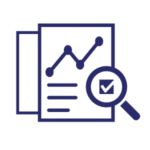Security Risk Assessment
What’s the Weakest Link That’s Putting Your Business at Risk?
The First Step to Securing Your Network is a Risk Assessment.
A risk assessment identifies information assets the might be targeted by threats, assesses your business’s network and data security posture, and gains an understanding of prevalent and immanent threats to your business. As you identify and understand the threats and risks in your network, you can start making better decisions in what needs to be done to secure your network.
Why Do I Need it?
A security risk assessment is your blueprint for securing your network and digital assets. This is something that should be done regularly, because new vulnerabilities and threats are on the rise. Without an assessment you may not know, what you don’t know. It’ like being told to go fix a house, but you don’t know what is broke. You don’t’ know what tools you need. It is a vital step in securing your infrastructure. It allows you to identify potential risks, evaluate the impact of the risks, and develop mitigation strategies. It is a requirement for many regulatory compliance.
How Does it work?
The best risk assessments are a collaborative effort with the business units and IT. IT has the tools to test for threats and vulnerabilities, knowledge to know how to protect, and understanding of controls. Whereas the business units know what data is most sensitive, and valuable to the business. They also know how they consume and work with the internal and external assets. A collaborative effort will yield the most impactful results.

Determine Value of Information Assets
Formulate a way and document to determine the importance of an asset in your network. What if you lost that asset? Would it matter? How much?

Prioritize Assets
Prioritize your assets to what is most valuable and identify what and how they will be assessed? Each device may need a different tool to identify the risks.

Identify Threats
Outline the threats including physical threats, system failures, digital threats, human error, that could cause harm to your business.

Assess Vulnerabilities
Identify the vulnerabilities on your network, devices, cloud, people. What can be exploited that an attacker can use to breach your systems or cause harm? This is something to look at logically as well as use tools to identify known technical vulnerabilities.

Analyze Existing Controls
Now that you understand the assets, their value, and the risks, it is time to determine what controls you have in place to stop or mitigate these risks. If you don’t have a control in place, what can you put in place to protect your business?

Document the Process
There are many compliance standards that require this entire process to be documented. This will help you understand what you have learned, make the process repeatable, more efficient, and look back at your security posture and actions.
Regularly Repeat
Rinse and Repeat. This must be done a regular basis. The threat landscape is constantly evolving and networks change. Personnel changes and knowledge transfer can also be lost. That is why this should be at least an annual occurrence to help you keep your business and assets protected.
What Next? Ongoing Risk Management
As mentioned, a risk assessment is just that. An assessment to understand the problems and solutions. The next step is development a risk management strategy. This includes managing, implementing, preventing, and responding to these risk. This is an ongoing process and discussed weekly or monthly to ensure you are continually improving your security. There are many benefits benefits of an ongoing Risk Assessment Strategy. Just a few are mentioned below.

Mitigate Risk
As you understand your vulnerabilities and threats and start to take corrective action you minimize the risk of a breach and dark web exposure.

Prevent Data Loss
As you take a more proactive approach to security, preventing or stopping attacks, you prevent data loss and protect your business.

Reduce Long-Term Costs
Preventing a breach or just minimizing the exposure can save your business significant revenue and potential reputational damage.

Create a Security
Minded Culture
Being Pro-active and taking security seriously, you create a culture where everyone takes it seriously. This type of reputation can be good for employee morale and customer loyalty.

Improve Organizational Knowledge
Maintaining network documentation, asset history, known vulnerabilities, and controls will help your organization respond more quickly and retain knowledge.

Avoid Regulatory Compliance Issues
By following these best practices, you avoid hassles in complying with new regulatory standards regarding technology.
We Care About Protecting Your Business.
You don’t have to tackle this alone. Our experienced team of engineers has the knowledge, tools, and experience to perform the risk assessment and provide a full report with recommendations. Let our experts provide you with a free risk assessment today. Please complete our form and a representative will be in contact with you to schedule an engineer to evaluate your environment and formulate a prevention plan.
What ISOCNET Customers have to say
"Fantastic company with an impressive skill set and even better customer service. Our firm is extremely happy with our new website. Hire them!"
Amanda
"I can't express how much it means to me that I know you always have my back when it comes to the website! Trust is everything! Thank you so much for all you do!!"
Mary
"I can't think of a better way to say ISOC is great than: They do what they say they are going to do, when they say they are going to do it and for the price they say they are contracting for. I've been with them since the beginning (1998)."
Chuck Klein
"Very quick responsive answer to my complicated issue."
Russ Connors
"Hi Kelly, We’re super pleased with how quickly you guys were able to help us out. Thank you so much for jumping in and to get the issues resolved and the site back up. "
Best, Lisa
"At ISOC you get to talk to a knowledgeable live individual, you are not left waiting on hold, you never get pushed into voice-mail hell or AI bots, and you get follow up without having to ask for it. Thanks, John, you saved me a lot of anxiety and effort."
Richard
"Also, I would like to comment on your professionalism and ease of handling things for us over the past several years as we are technically challenged. You and Kelly make us want to continue working with ISOC!!"
David
"Over the past two years I have had the pleasure of working with two of your support personnel, John and Tommy. Both times I needed assistance in getting my e-mails up and running. Both of your employees are skilled, knowledgeable and responsive. They represent your organization very well!"
Bill
"Hi Kelly, I want to let you know that John from Support was absolutely fabulous helping me today. He was also very patient when I didn’t understand something. Have a great week."
Teri
"I was probably one of your first customers and have loved your service. Thank you for your great service."
Glenn
"I had my first PC before Windows 1.0 and the wide spread use of the internet. As technology increased, I had difficulty getting satisfactory response from various quasi support groups to respond to issues. That is , until I started with ISOC as my ISP. I am now semi-retired, but will still continue my relationship with ISOC. Any problem that I faced was always dealt with in a responsive and professional way. Also, I want make a special “shout out” to Tommy O’Donnell with your support group. He is a problem solver extraordinaire. He has the remarkable ability to communicate with someone like myself who barely can spell computer on good day. I have complete trust in his abilities and advice."
Jack
"Since switching to Office 365 from our inhouse email, our company has experienced almost zero email down time. The support we receive from the team at ISOCNET is friendly and professional and are very quick to address any issues that do come up. ISOCNET has been invaluable in their assistance as we move our sister companies into Office 365 also. I would highly recommend ISOCNET to anyone looking to move to Office 365."
Ed
"Been receiving great praise from our new website, it turned out fantastic!"
Mike
"It’s a pleasure to work with a business that values customers and shows it. I teach Marketing at UC and I always emphasize the importance of customer experience, both positive and negative. This is a great example of the former. "
Best, Mike
"In this day of negative feedback I wanted to take the time to say thank you for your EXCELLENT tech Tommy O who confidently led me through several problems and made my ISOC life so much better. Kudos to Tommy and the person smart enough to hire him! "
Grateful Customer - Brenda
"Rick: I just wanted to pass along that Kelly Berkemeier and Shelly Enda have been doing a fantastic job supporting The Circuit. They have been invaluable in helping us answer questions, make some changes and provide advice on how to move forward. Thanks for all ISOCNET does for us!"
Tracy
"Dear ISOC Management, I want to extend my sincere appreciation regarding Jesse Rowland. He has helped me fairly recently and yesterday decreasing my trash bin and helping me understand what I need to do next time. He offered to delete my trash bin and me not knowing it was from my tablet. Still learning how to use my tablet."
Gratefully, Missy
"Hi, All. I really want to pass on my thanks to ISOC for having Josh Miller on your team. I have been a member of ISOC for about 15 years. I have never had anything but wonderful, attentive service whenever I had a question or problem. Josh took it to another level with his patience with me being a complete non-techie, helping me frequently with both emails and phone conversations. He held my hand through a most difficult series of issues with my not understanding how to make things work. Thanks for having such a great employee!"
Scott
"Hi Kelly, I wanted to let you know how much I appreciate your great team in getting my website up and running. Cherie was excellent as the project lead and your tech team was great walking me through setup. Everyone was friendly, very responsive on getting back to me with answers to my questions and making changes. You were great too! I love the website and so does everyone that has seen it.
Tammy
"We have scheduled monthly status meetings with ISOC, what a welcomed change. It gives us the opportunity to be proactive instead reactive when making decisions about our network infrastructure."
Paul
"I've been favorably impressed with their depth of understanding of how to structure the website. While the work is ongoing, the engagement thus far has increased website traffic and inquiries. The team holds virtual meetings with the partner for communication and project progress updates. Above all, ISOCNET's breadth of understanding of the project needs ensures high-quality outcomes."
Rob
"An increase in sales and organic and paid traffic has resulted from ISOCNET's development work. The team was responsive and attentive to the unique needs of the client. Besides providing training, they also built the website in a way that the client could manage it independently."
Stephanie
"Thank you for your excellent Customer Service! It makes all the difference (and creates loyal customers). ISOCNET obviously understands that. Please forward this message to your superior, along with my congratulations on an employee that exceeds customer expectations."
Thanks, Dee
"Hi, I just wanted to let you guys know what a gem you have in Shelley Enda. She is patient, smart, down-to-Earth and always flexible. We have recently had changes in leadership that have caused us to slow down on web design. She has been invaluable in helping us get through this process. I am always telling her how great she is but I want to make sure that everyone else does too. She is an excellent representation of your company. Seriously, she bends over backwards to make us happy."
Thanks, Erin
"I have truly valued and appreciated our communication and if every vendor we contacted was as helpful and amicable, life would be a better place."
Tim
"Brandon was a pleasure to work with and already provided help with a few things that we were struggling with here. Have a nice weekend!"
Thank you, Laurice
"ISOCNET is a FANTASTIC group of professionals, they are experts in IT, data security, online marketing, website development & design and cloud services. The team is top-notch and consistently provide excellent customer service!! Their knowledge is extensive and they have experience in so many verticals and industries. I highly recommend their services!!"
Debbie Hill
What ISOCNET Customers have to say
"Fantastic company with an impressive skill set and even better customer service. Our firm is extremely happy with our new website. Hire them!"
Amanda
"I can't express how much it means to me that I know you always have my back when it comes to the website! Trust is everything! Thank you so much for all you do!!"
Mary
"I can't think of a better way to say ISOC is great than: They do what they say they are going to do, when they say they are going to do it and for the price they say they are contracting for. I've been with them since the beginning (1998)."
Chuck Klein
"Very quick responsive answer to my complicated issue."
Russ Connors
"Hi Kelly, We’re super pleased with how quickly you guys were able to help us out. Thank you so much for jumping in and to get the issues resolved and the site back up. "
Best, Lisa
"At ISOC you get to talk to a knowledgeable live individual, you are not left waiting on hold, you never get pushed into voice-mail hell or AI bots, and you get follow up without having to ask for it. Thanks, John, you saved me a lot of anxiety and effort."
Richard
"Also, I would like to comment on your professionalism and ease of handling things for us over the past several years as we are technically challenged. You and Kelly make us want to continue working with ISOC!!"
David
"Over the past two years I have had the pleasure of working with two of your support personnel, John and Tommy. Both times I needed assistance in getting my e-mails up and running. Both of your employees are skilled, knowledgeable and responsive. They represent your organization very well!"
Bill
"Hi Kelly, I want to let you know that John from Support was absolutely fabulous helping me today. He was also very patient when I didn’t understand something. Have a great week."
Teri
"I was probably one of your first customers and have loved your service. Thank you for your great service."
Glenn
"I had my first PC before Windows 1.0 and the wide spread use of the internet. As technology increased, I had difficulty getting satisfactory response from various quasi support groups to respond to issues. That is , until I started with ISOC as my ISP. I am now semi-retired, but will still continue my relationship with ISOC. Any problem that I faced was always dealt with in a responsive and professional way. Also, I want make a special “shout out” to Tommy O’Donnell with your support group. He is a problem solver extraordinaire. He has the remarkable ability to communicate with someone like myself who barely can spell computer on good day. I have complete trust in his abilities and advice."
Jack
"Since switching to Office 365 from our inhouse email, our company has experienced almost zero email down time. The support we receive from the team at ISOCNET is friendly and professional and are very quick to address any issues that do come up. ISOCNET has been invaluable in their assistance as we move our sister companies into Office 365 also. I would highly recommend ISOCNET to anyone looking to move to Office 365."
Ed
"Been receiving great praise from our new website, it turned out fantastic!"
Mike
"It’s a pleasure to work with a business that values customers and shows it. I teach Marketing at UC and I always emphasize the importance of customer experience, both positive and negative. This is a great example of the former. "
Best, Mike
"In this day of negative feedback I wanted to take the time to say thank you for your EXCELLENT tech Tommy O who confidently led me through several problems and made my ISOC life so much better. Kudos to Tommy and the person smart enough to hire him! "
Grateful Customer - Brenda
"Rick: I just wanted to pass along that Kelly Berkemeier and Shelly Enda have been doing a fantastic job supporting The Circuit. They have been invaluable in helping us answer questions, make some changes and provide advice on how to move forward. Thanks for all ISOCNET does for us!"
Tracy
"Dear ISOC Management, I want to extend my sincere appreciation regarding Jesse Rowland. He has helped me fairly recently and yesterday decreasing my trash bin and helping me understand what I need to do next time. He offered to delete my trash bin and me not knowing it was from my tablet. Still learning how to use my tablet."
Gratefully, Missy
"Hi, All. I really want to pass on my thanks to ISOC for having Josh Miller on your team. I have been a member of ISOC for about 15 years. I have never had anything but wonderful, attentive service whenever I had a question or problem. Josh took it to another level with his patience with me being a complete non-techie, helping me frequently with both emails and phone conversations. He held my hand through a most difficult series of issues with my not understanding how to make things work. Thanks for having such a great employee!"
Scott
"Hi Kelly, I wanted to let you know how much I appreciate your great team in getting my website up and running. Cherie was excellent as the project lead and your tech team was great walking me through setup. Everyone was friendly, very responsive on getting back to me with answers to my questions and making changes. You were great too! I love the website and so does everyone that has seen it.
Tammy
"We have scheduled monthly status meetings with ISOC, what a welcomed change. It gives us the opportunity to be proactive instead reactive when making decisions about our network infrastructure."
Paul
"I've been favorably impressed with their depth of understanding of how to structure the website. While the work is ongoing, the engagement thus far has increased website traffic and inquiries. The team holds virtual meetings with the partner for communication and project progress updates. Above all, ISOCNET's breadth of understanding of the project needs ensures high-quality outcomes."
Rob
"An increase in sales and organic and paid traffic has resulted from ISOCNET's development work. The team was responsive and attentive to the unique needs of the client. Besides providing training, they also built the website in a way that the client could manage it independently."
Stephanie
"Thank you for your excellent Customer Service! It makes all the difference (and creates loyal customers). ISOCNET obviously understands that. Please forward this message to your superior, along with my congratulations on an employee that exceeds customer expectations."
Thanks, Dee
"Hi, I just wanted to let you guys know what a gem you have in Shelley Enda. She is patient, smart, down-to-Earth and always flexible. We have recently had changes in leadership that have caused us to slow down on web design. She has been invaluable in helping us get through this process. I am always telling her how great she is but I want to make sure that everyone else does too. She is an excellent representation of your company. Seriously, she bends over backwards to make us happy."
Thanks, Erin
"I have truly valued and appreciated our communication and if every vendor we contacted was as helpful and amicable, life would be a better place."
Tim
"Brandon was a pleasure to work with and already provided help with a few things that we were struggling with here. Have a nice weekend!"
Thank you, Laurice
"ISOCNET is a FANTASTIC group of professionals, they are experts in IT, data security, online marketing, website development & design and cloud services. The team is top-notch and consistently provide excellent customer service!! Their knowledge is extensive and they have experience in so many verticals and industries. I highly recommend their services!!"
Debbie Hill
Frequently Asked Questions
Find the answers to questions that most new ISOCNET clients have, designed to help you select the right business plan for your needs
What is the difference between Risk assessment and risk management?
A risk assessment is a snapshot in time of your current state vs risk management is an ongoing process of managing, mitigating, and responding to risks.
Do I need an incident response plan?
Yes, part of your risk management is responding to compromises. It is important to have something in place to allow you act quickly, minimize exposure, and recovery quickly.
